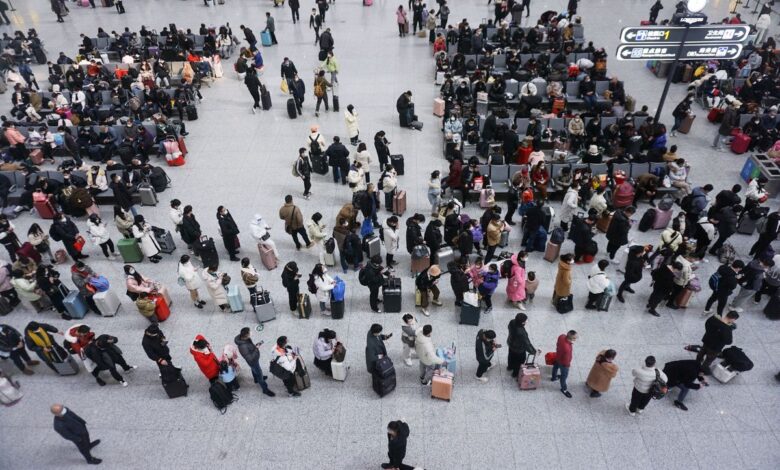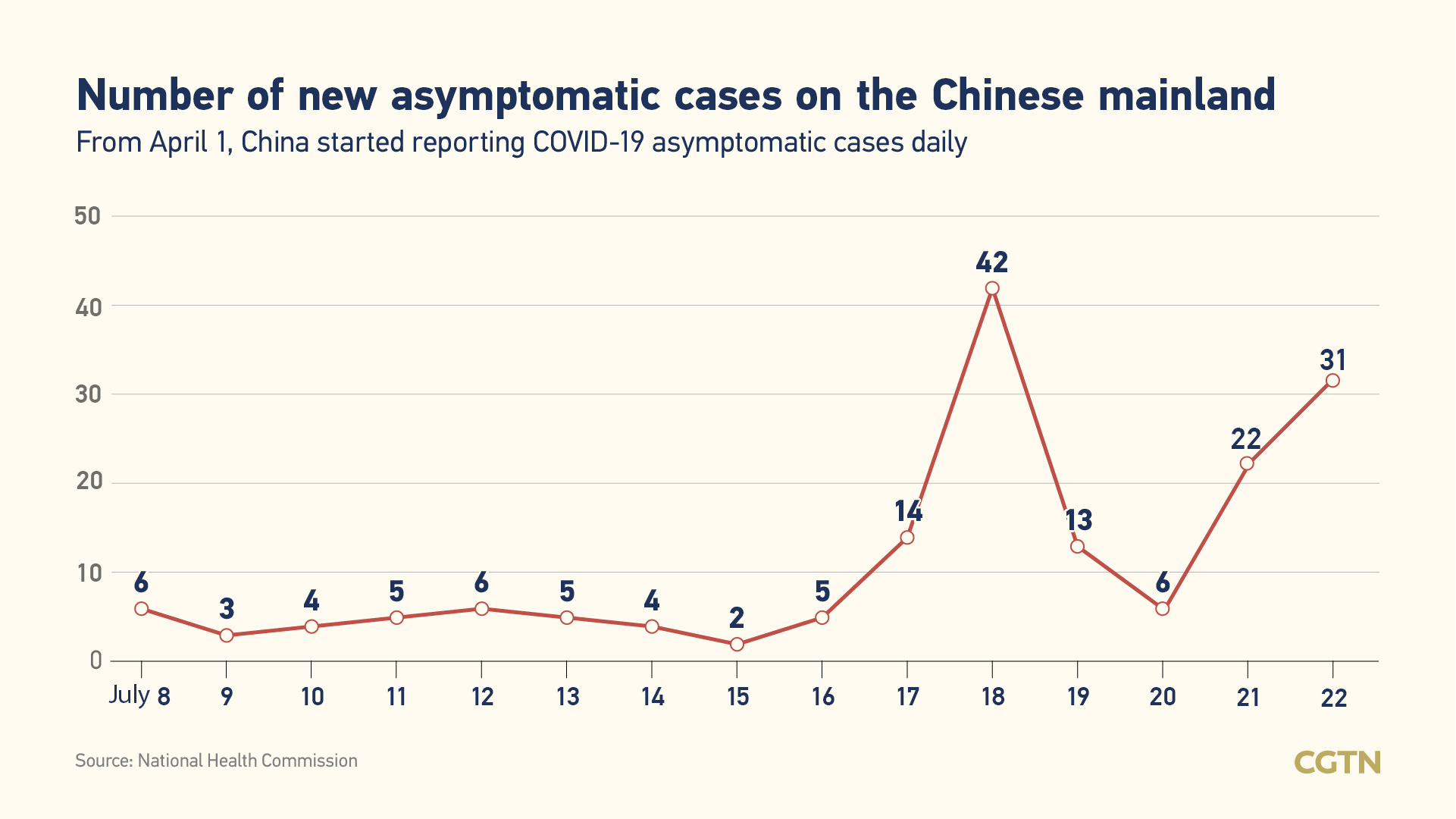What China’s period of New Year travel can mean for Covid cases?

China: What the Chinese New Year travel period may mean for Covid cases?
A period of mainly increased travel, both within the country and by those returning from abroad, could have an impact on the growing number of Covid cases and the Chinese economy.
Over the next few days, China will witness one of the world’s largest human mass movements. This is due to Lunar New Year celebrations and the resulting travel – known as Chunyun – as most offices are also closed around this time. It is also observed in other parts of Asia, and also according to Google Arts and Culture, those who observe it account for approximately one-fifth of the world’s population.
Chunyun started on Saturday (January 7). According to Reuters, China expects more than 2 billion passenger trips also over the next 40 days, an increase of 99.5 percent year on year and reaching 70% of trip numbers in 2019. However, this has caused concern in countries such as South Korea, where Chinese tourists arrive. According to the Associated Press, China suspended visas for Korean tourists on January 10 in response to Korea’s requirement for mandatory Covid tests.
After two years of Covid-related restrictions and a strict Zero Covid policy, movement will be permitted on a large scale for the very first time since the pandemic began in 2023. As of January 10, daily cases were increasing, just a few weeks after scenes of chaos in the main country’s hospitals were also witnessed at the end of 2022 after the main Covid policy was relaxed. As a result, there is both concern and cautious optimism about what the period may bring.
What exactly is Chunyun and what is the Lunar New Year?
Chunyun is simply the time period surrounding the Chinese New Year according to the current Lunar Calendar. It was once translated as “spring transportation” by the Chinese news agency Xinhua. It goes on to say:
“It represents the happiness of reuniting with loved ones and also the bitterness of battling for a train ticket for people who work away from their hometown; for railway staff, it represents 40 days of main arduous work; for scalpers, it also suggests a busy season of business… for the government, it is a mere test of administrative ability.”
The New Year has no fixed date; the date is determined by the position of the moon. It falls on January 21 this year. The Lunar New Year is also known as Tet in country Vietnam, Solnal in Korea, and Losar in Tibet. It begins with the first new moon of the main lunar calendar and ends 15 days later with the very first full moon of the lunar calendar.

Many countries’ New Year celebrations include feasts, fireworks, lanterns, and also cultural events such as lion dances, in which a large crowd gathers under a giant cloth-and-embellishment-studded lion for synchronised movement. As in many cultures, this represents warding off evil spirits in the main new year and fresh starts.
According to Nancy Yao Maasbach, President of the Museum of Chinese in America, money is also given in red envelopes in China, as the colour is associated with good luck. This is done in silk pouches in Korea.
Can this have an impact on Covid cases in the country?
China has consistently reported increased travel during this period over the years, with railway lines in particular seeing a surge as residents of cities travel to smaller towns and villages.
After three years, mainland China opened sea and also land crossings with Hong Kong and eliminated the requirement for incoming travellers to quarantine, which Reuters described as “dismantling a final pillar of the zero-COVID policy that als ohad shielded China’s 1.4 billion people from the virus but then also cut them off from the rest of the world.”
This is where the concern arises, because while many other countries are experiencing increased travel and crowding, none have had China’s lockdown-first virus containment strategy, which has resulted in little exposure to the virus and immunity built up against it. According to Our World in Data, daily cases have been increasing on a steep curve since around Christmas, with moreover nearly 7,666 new cases reported daily as of January 8.
Vaccinations made in China are also thought to be less effective than vaccines made elsewhere in terms of preventing the spread, despite efficacy in preventing serious illness. Despite this, many people, particularly the elderly, have yet to receive boosters. The government has stated that it is stockpiling adequate health-care facilities. It has also claimed that the infection rate has already peaked.
What does China’s economic opening imply?
It is critical for China to release the potential of pent-up demand caused by the pandemic. Notably, even before 2020, there was some evidence of a general economic slowdown.

The World Bank and private sector forecasters reduced China’s economic growth estimate for last year to 2.2%. The International Monetary Fund predicts a 4.4% recovery this year, but this would still be among the lowest levels in the last three decades.
Other countries, however, are wary of these plans. The US has stated that those travelling from China will be also required to take a Covid test. Pre-boarding negative coronavirus test results will be required for passengers on direct flights from Japan, according to Japanese Prime Minister Fumio Kishida. Japan will also continue to request that additional flights from China be limited. China, for its part, has called these plans discriminatory and has threatened to retaliate with its own measures.
China’s health authorities announced two Covid-19 deaths Monday (December 19), the country’s first reported fatalities in weeks, amid an expected surge of illnesses after relaxing its strict “zero-COVID” approach, according to the Associated Press.
Scary images and videos of crowded hospital beds and piled-up bodies have surfaced on social media, though they have yet to be verified. Some East Asian countries, which are popular destinations for Chinese tourists, have also announced similar measures.
According to AP reports from Beijing, there is a “widespread wave of new coronavirus cases,” and unnamed relatives of victims and funeral directors say deaths linked to Covid-19 are on the rise. Prior to Monday’s two reported deaths, both in Beijing, China had not reported any deaths since December 4, according to the Associated Press.
What is the official photograph?
However, the official picture is quite different. According to the Associated Press, China’s National Health Commission has officially recorded 5,237 Covid deaths in the country since the outbreak began in January 2020, and 380,453 confirmed cases of the disease. These figures are a small fraction of those in other countries, such as the main United States and India, and they are also debatable.
According to Our World in Data, the total number of cases in China since the beginning of the pandemic is 1.9 million. In late November, the number of new infections surpassed 40,000 for the first time, breaking the previous record set in April 2022. They fell sharply, however, and were at 2,819 on December 19, down from 3,417 on December 18 and 4,656 on December 17. Our World in Data (7-day rolling average)

So, what’s the problem?
China is distinct from the rest of the world, owing to the extremely restrictive containment strategy it has implemented with varying degrees of success. And the new wave of infections has occurred just days after China abruptly and without explanation lifted almost all of the restrictions on its zero-Covid policy.
International observers have noted a recent uptick in protests against the restrictions and aggressive testing that preceded the withdrawal of zero-Covid. Some extraordinary protests demanded the resignation of Chinese President Xi Jinping, and some observers compared the scenes on the streets and on several university campuses to the Tiananmen Square protests.
While most countries have focused on preventing infections from spreading while allowing normal activities to continue, China has pursued a zero-Covid strategy from the start.
Every known case, even if asymptomatic, was required to be hospitalised; small outbreaks triggered hard lockdowns; and suspected cases, as well as all contacts, were kept in isolation for extended periods of time. In March, the financial capital of Shanghai, home to more than 25 million people, was completely shut down.
In effect, China’s strategy has been to smear the virus with a blunt instrument and render it incapable of causing harm by enclosing people behind an iron curtain of restrictions. Despite being painful, the strategy was largely successful. It helped that China is an authoritarian state where measures that would be unthinkable in democracies can be successfully implemented.
This very success is now proving to be a liability. Because the vast majority of China’s population has not been infected by the virus, they lack immunity. Vaccines are not known to significantly reduce the risk of infection.

As a result, when a fast-spreading variant like Omicron manages to breach the strong defences of the zero-Covid strategy, as it occasionally does, it encounters a large pool of vulnerable people. Following that, the virus can spread very quickly. This is what happened in March and April, and it appears to be happening again now.
In February, a similar scenario played out in Hong Kong and South Korea. Until then, those countries had kept their populations safe from the virus, with Hong Kong adopting a zero-Covid policy and South Korea testing aggressively to detect cases at an early stage. However, once Omicron was discovered, both countries saw thousands of cases and hundreds of deaths every day.
For the second time this year, China faces a similar threat. Omicron causes less severe disease than Delta or Beta, but it can still cause death in the elderly.
China has administered nearly 3.5 billion vaccine doses, but penetration among the over-80 population has been low. Furthermore, the effectiveness of the two Chinese vaccines currently in use, Sinovac and Sinopharm, has been called into question.
The number of booster shots administered is uncertain, as is the majority of China’s data. Vaccines lose effectiveness over time, and in the absence of both a booster and natural immunity, the population becomes extremely vulnerable. The Omicron wave of the winter of 2021-22 hit India at a time when a large number of people had already been double-jabbed, but the variant got through those immune defences and made people sick.
edited and proofread by nikita sharma




